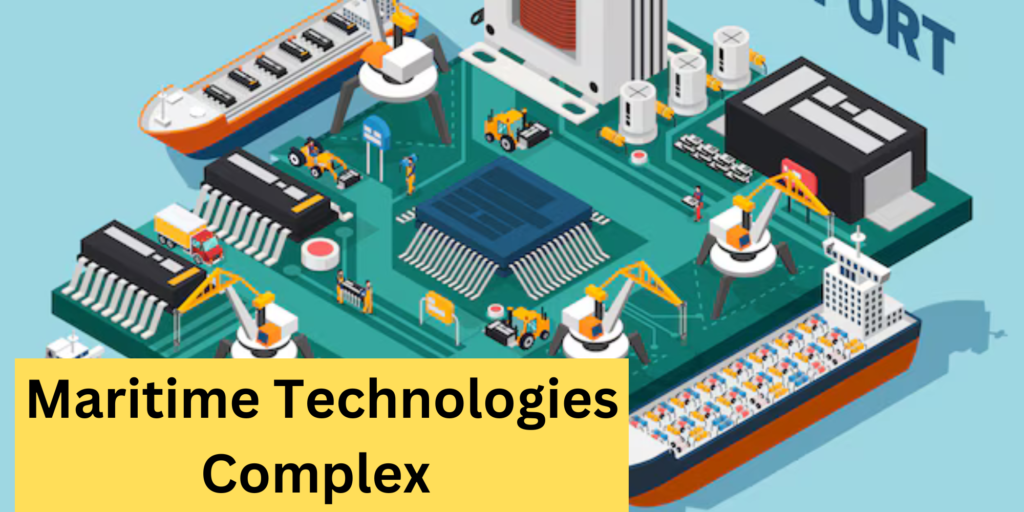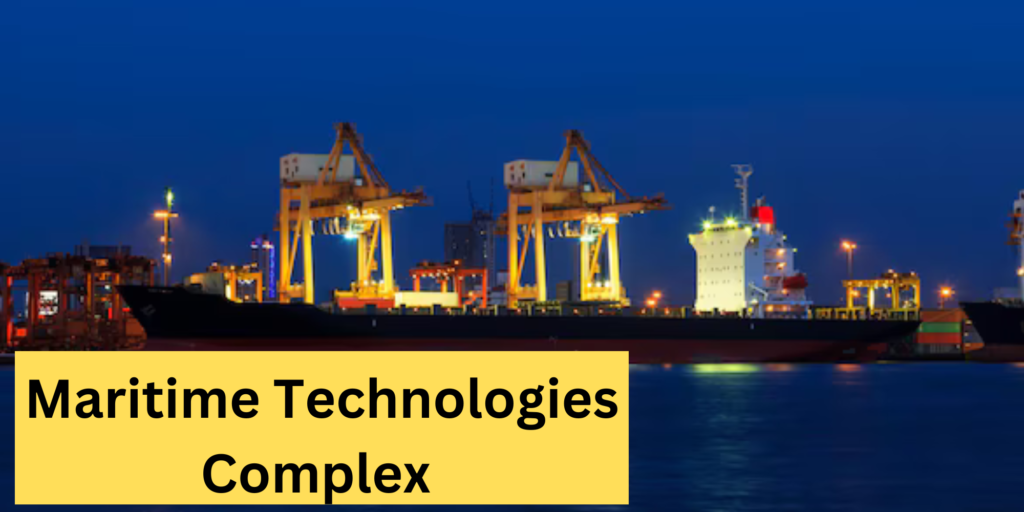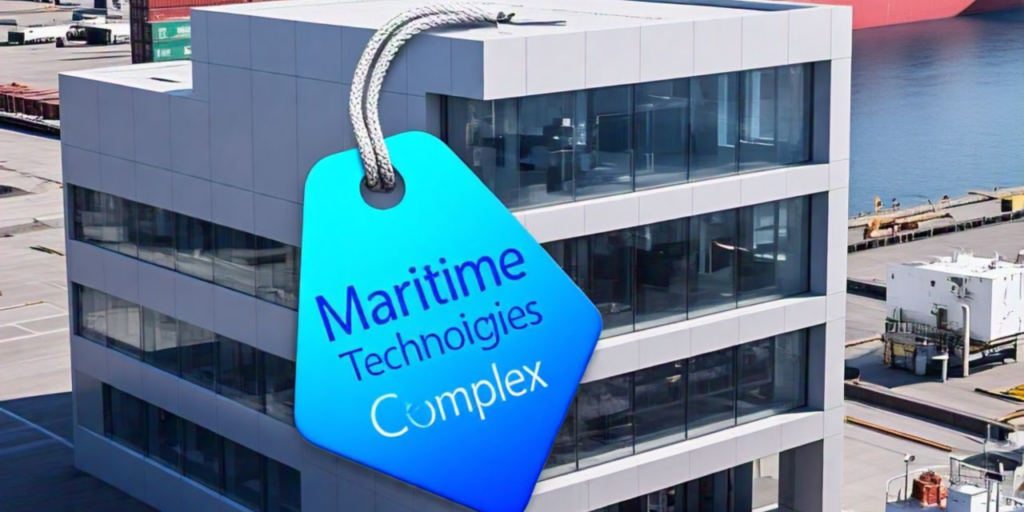Introduction
The Maritime Technologies Complex is reshaping the global transport industry by using integrating advanced innovations that beautify efficiency, safety, and sustainability. As over 80% of global change relies upon on maritime shipping, the want for smarter, greener, and more reliable solutions has by no means been greater. This complicated combines modern navigation tools, automation, and eco-friendly propulsion systems to deal with modern challenges while fostering seamless worldwide connectivity. By bridging conventional maritime practices with modern-day advancements, the Maritime Technologies Complex now not most effective transforms operations however also sets the stage for a more sustainable and efficient future in international trade.

Sustainability on the Core of Maritime Innovations
Green Propulsion Systems
The Maritime Technologies Complex locations sustainability at its middle through developing and deploying inexperienced propulsion structures. Hybrid engines, electric motors, and hydrogen-powered structures are becoming more accepted, supporting to lessen gasoline consumption and emissions. These structures are designed to decrease the environmental footprint of delivery, drastically decreasing the quantity of CO2 and pollution launched into the ecosystem and oceans. The improvement of those clean strength solutions in the complex is critical for assembly international sustainability goals, ensuring that the transport industry can hold to thrive whilst minimizing its ecological effect.
Energy Efficiency in Port Operations
Energy performance within ports is a critical aspect of the Maritime Technologies Complex, which focuses on integrating renewable electricity assets and optimizing power usage. Ports worldwide are embracing smart grids, sun, and wind electricity to lessen dependence on fossil fuels. IoT sensors are used to monitor strength intake across various port operations, inclusive of shipment dealing with, lighting fixtures, and garage. These technologies assist manage electricity needs greater efficaciously, making sure that port operations are not handiest cost-powerful however additionally environmentally responsible. This transition contributes to a sustainable, green supply chain across the maritime quarter.
utomation and Artificial Intelligence in Shipping
Autonomous Vessels Revolution
One of the most interesting developments within the Maritime Technologies Complex is the advancement of self reliant vessels. These ships are equipped with AI and advanced sensors, allowing them to navigate, function, and reply to environmental conditions without human intervention. Autonomous ships are safer, extra green, and reduce human mistakes. These vessels can mechanically regulate routes based totally on weather patterns, traffic situations, and gas consumption, allowing for more green operations. As technology improves, the enormous use of self sufficient vessels is about to revolutionize the transport enterprise, supplying sizeable fee savings and operational upgrades.
Predictive Maintenance with AI
AI driven predictive maintenance is an essential element of contemporary maritime operations, brought thru the Maritime Technologies Complex. Sensors located on ships reveal numerous additives, amassing information about engine performance, hull condition, and other essential systems. Using AI algorithms, this information is analyzed to are expecting whilst upkeep is needed, helping to save you breakdowns before they occur. By figuring out capability issues early, predictive upkeep minimizes downtime and restore expenses at the same time as making sure that vessels remain in top of the line circumstance. This era not handiest improves the safety of maritime operations but also complements operational performance and cost-effectiveness.
Enhancing Safety Through Maritime Technologies
Advanced Surveillance Systems
Safety in maritime operations is paramount, and the Maritime Technologies Complex enhances protection protocols by means of integrating superior surveillance systems. These systems encompass AI-powered cameras, drones, and sensors that display vessels, shipment, and port activities in actual time. They can locate anomalies which includes unauthorized get right of entry to, suspicious activity, or capability threats, enabling prompt responses. Automated surveillance structures also assist to save you injuries via offering actual-time facts at the vessel’s environment, making it less complicated for group participants to avoid hazards. The integration of such systems guarantees that safety standards are met and maintained across the maritime industry.
Real Time Weather Forecasting
Real-time weather forecasting is every other crucial generation inside the Maritime Technologies Complex. By incorporating superior meteorological systems, ships can obtain continuous updates on climate conditions, enabling them to navigate adequately. These forecasting systems use huge records analytics and AI to are expecting potential risks including storms, tough seas, or icebergs, allowing vessels to regulate their path thus. By heading off dangerous weather conditions, ships can improve safety, lessen gasoline consumption, and keep away from costly delays. This technology enables guard each team contributors and the environment, making it an necessary part of the maritime safety environment.
Blockchain Integration for Secure Transactions
Improved Cargo Tracking
Blockchain technology is being used inside the Maritime Technologies Complex to revolutionize shipment monitoring. By developing transparent, tamper-evidence data, blockchain ensures that the motion of products is tracked as it should be at some point of the whole journey. Each shipment is logged right into a blockchain ledger, permitting real-time access to precise shipping information, which include vicinity, circumstance, and transit time. This degree of transparency enhances accept as true with among stakeholders, reduces the hazard of fraud, and guarantees that goods arrive on time and in the proper condition, enhancing the efficiency of the worldwide supply chain.
Smart Contracts in Maritime Operations
Smart contracts are digital agreements saved on a blockchain, and they are more and more getting used to automate maritime operations inside the Maritime Technologies Complex. These contracts mechanically execute predefined moves, which includes bills, when certain situations are met. For example, while a shipment reaches its destination, the clever agreement can routinely trigger price to the shipper. This reduces office work, quickens transactions, and minimizes human blunders. The use of smart contracts enhances performance, reduces delays, and lowers operational prices throughout the shipping industry, streamlining the whole thing from customs clearances to cargo delivery.
Smart Ports and Infrastructure
Efficiency Boost with Smart Ports
Smart ports, powered via the Maritime Technologies Complex, leverage IoT and AI to automate shipment coping with, optimize logistics, and enhance average efficiency. Sensors tune boxes, monitor port visitors, and provide real-time facts to port operators, allowing them to make statistics-driven choices. These technologies lessen waiting instances, beautify operational speed, and decrease congestion, making sure that items flow via ports greater efficiently. Smart port technologies additionally enhance resource allocation, lowering energy waste and boosting sustainability in port operations, reworking ports into high-tech hubs that maximize productivity at the same time as reducing environmental impacts.
Improved Safety and Security
Safety and protection at ports are substantially more advantageous by using smart technology. The Maritime Technologies Complex integrates AI-powered surveillance structures, cybersecurity measures, and automatic tracking tools to stable belongings and guard towards capacity threats. These technology constantly music vessel actions, monitor cargo, and discover anomalies in real-time. The incorporation of gadget learning algorithms enables discover patterns of volatile conduct, taking into consideration proactive security measures. By improving safety and decreasing the hazard of accidents or robbery, the complex ensures that maritime change operates in a more secure, more stable surroundings.
Challenges in Implementing Maritime Technologies
High Costs of Innovation
While the Maritime Technologies Complex gives promising improvements, the implementation of latest technology comes with tremendous costs. Developing and integrating present day systems like AI, blockchain, and self sufficient vessels calls for sizable investment. Smaller companies and developing countries may additionally struggle with the excessive prematurely fees, slowing down enterprise-huge adoption. However, the lengthy-time period advantages—decreased operational expenses, expanded efficiency, and environmental sustainability—ultimately outweigh the preliminary costs. As generation matures and turns into extra reachable, these challenges will diminish, permitting considerable adoption throughout the maritime industry.
Cybersecurity Concerns
As the maritime enterprise becomes increasingly more reliant on digital technology, cybersecurity risks grow. The Maritime Technologies Complex relies closely on interconnected structures, which can be susceptible to cyberattacks. Cybersecurity measures, inclusive of information encryption, intrusion detection systems, and multi-component authentication, are critical to safeguarding the industry’s infrastructure. These technologies assist defend vessels, ports, and transport networks from hacking and information breaches. As cyber threats evolve, non-stop investment in robust cybersecurity may be vital to preserving the integrity of maritime operations and safeguarding sensitive statistics.

The Future of Maritime Technologies
Advancements in Autonomous Vessels
The future of maritime transport lies in self sustaining vessels, and the Maritime Technologies Complex is main this revolution. With AI, superior sensors, and automation, ships could be capable of navigate and function with minimal human intervention, considerably lowering human error. As era improves, self sustaining vessels becomes more secure, extra value-effective, and more efficient, providing faster shipping times and decreasing operational costs. The adoption of self sustaining ships will redefine the delivery industry, growing international change at the same time as enhancing protection and sustainability across the maritime area.
Sustainability Innovations
Sustainability will stay a riding pressure inside the Maritime Technologies Complex. Future technologies will recognition on growing zero-emission vessels, advanced green fuels, and extra efficient waste control systems. The push toward carbon neutrality and decreased environmental impact will manual the industry’s improvement in the coming years. Collaborative efforts between governments, organizations, and studies corporations will boost up the adoption of green technology, ensuring that the maritime enterprise stays a key player in global exchange whilst safeguarding the planet’s destiny.
Also read:https://expressiveechoes.blog/benefits-of-technology-for-chefs/
Conclusion
The Maritime Technologies Complex stands at the coronary heart of innovation, riding vast improvements in the global shipping industry. By integrating technology like AI, blockchain, autonomous vessels, and inexperienced propulsion systems, it is revolutionizing how items are transported global. These improvements now not best enhance performance and reduce expenses however also sell sustainability, ensuring that the maritime enterprise can keep to fulfill international exchange needs while minimizing environmental impact. As the arena evolves, the complex will play an increasingly vital function in shaping a safer, extra efficient, and sustainable maritime future, helping the continued increase of global commerce.



